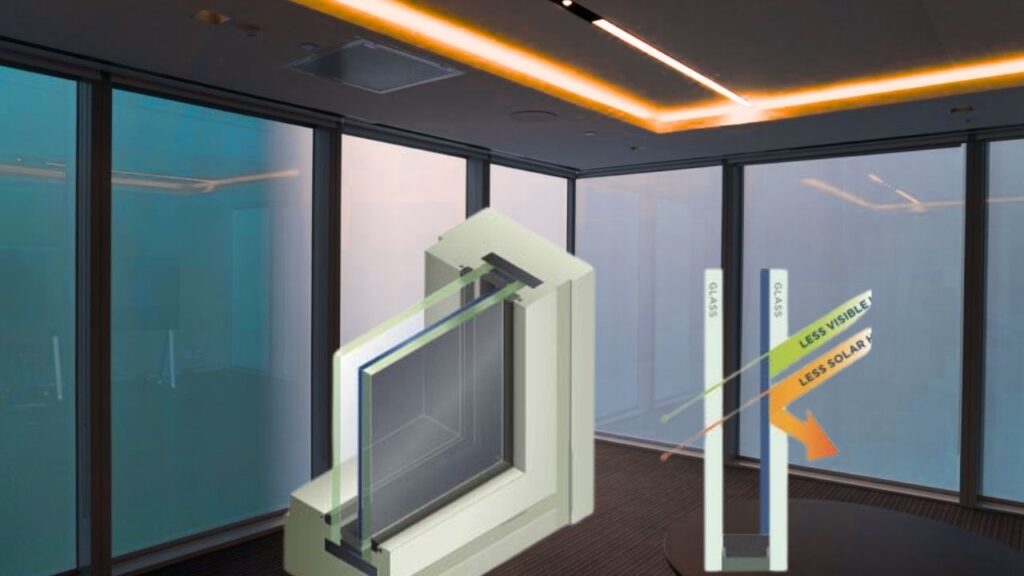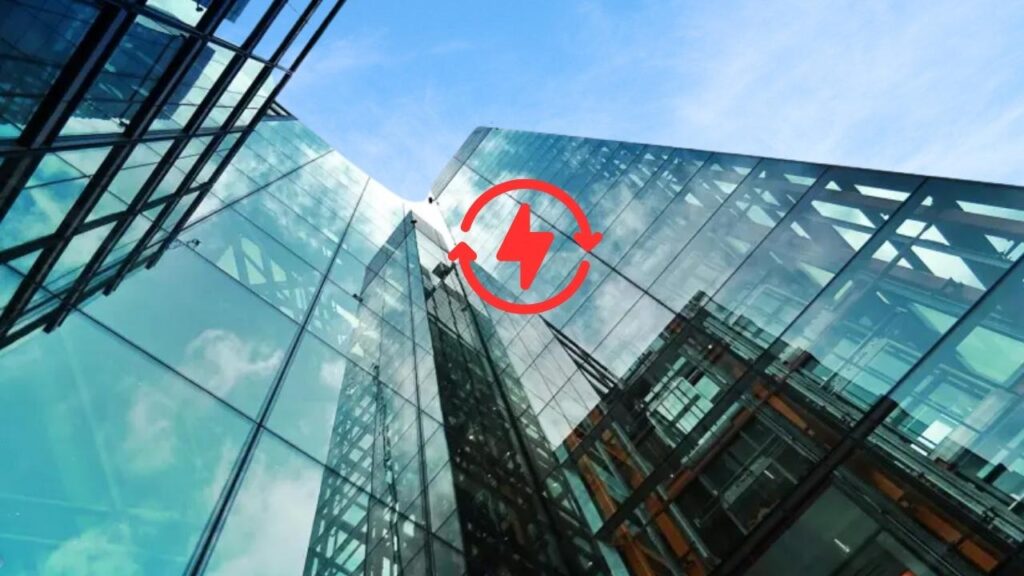The Rise of Electrochromic Glass: Electrochromic glass, also known as smart glass or dynamic glazing, is transforming how we think about windows. These high-tech panes can change their tint automatically or on demand, helping buildings conserve energy, improve comfort, and adapt to different lighting conditions throughout the day. Whether you’re designing a modern skyscraper or remodeling a sustainable home, smart windows are quickly becoming a must-have feature.

This article breaks down what electrochromic glass is, how it works, its benefits, and how to implement it—perfect for both curious homeowners and seasoned professionals in architecture and construction.
Table of Contents
The Rise of Electrochromic Glass
| Topic | Details |
|---|---|
| What Is Electrochromic Glass? | Smart glass that changes tint based on electrical input |
| Energy Savings | Reduces energy use by up to 20%, lowers HVAC loads |
| Comfort Benefits | Reduces glare, controls solar heat, increases daylight use |
| Applications | Used in homes, offices, hospitals, airplanes, and more |
| Technology Used | Materials like tungsten oxide shift properties under voltage |
| Major Brands | SageGlass, View Inc., Saint-Gobain, Gentex |
Electrochromic glass is helping define the future of smart, sustainable buildings. With its ability to reduce energy use, enhance comfort, and support wellness, it’s more than a luxury—it’s an investment in long-term performance and efficiency. As prices continue to fall and technology advances, we can expect smart glass to become a standard in both commercial and residential projects.
If you’re planning a new build or renovation, consider making electrochromic glass part of your smart building strategy.
What Is Electrochromic Glass?
Electrochromic glass is a type of glazing that alters its transparency or tint when voltage is applied. This tint change isn’t cosmetic—it offers significant advantages in terms of energy savings and occupant comfort. The transformation happens through a thin layer of materials like tungsten oxide, which shifts its optical properties when electricity causes ions to move between layers.
How Does It Work?
Here’s a step-by-step explanation of how electrochromic glass operates:
- A low-voltage electrical signal is applied to the glass.
- Ions move across layers of nanomaterials, changing the light absorption.
- The tint of the glass darkens or lightens based on how many ions are moved.
- The glass retains its tint state, requiring no energy to maintain it.
This makes the glass energy-efficient compared to traditional shading systems.
Why Electrochromic Glass Matters
Sustainability and Energy Efficiency

Electrochromic glass plays a key role in reducing a building’s energy use. Traditional windows allow heat and glare to penetrate during the summer and lose heat in winter, putting pressure on heating, ventilation, and air conditioning (HVAC) systems.
With electrochromic glass:
- Energy consumption can be reduced by 10% to 20% across the year.
- Cooling demands during peak heat hours can be cut by as much as 25%.
- Lighting energy use can be lowered by up to 26% by allowing more daylight in without glare.
These reductions add up to lower energy bills and a smaller environmental footprint.
Enhancing Comfort and Wellness

Electrochromic glass is designed to create healthier, more comfortable indoor environments.
Natural Light Without Discomfort
The tinting ability of smart windows reduces sun glare while still allowing natural daylight to pass through. This means occupants can enjoy sunlight without needing blinds or curtains to block uncomfortable brightness.
Thermal Regulation
Smart glass helps maintain a more stable indoor temperature by reducing solar heat gain during summer and retaining warmth during winter. This results in fewer hot or cold spots, especially near large windows.
Improved Wellbeing
Access to daylight has been shown to support better sleep patterns, mood, and focus. Electrochromic glass supports this benefit by maximizing exposure to natural light while minimizing discomfort or UV exposure.
Common Applications of Electrochromic Glass
Electrochromic glass is being embraced in many sectors, including:
Commercial and Office Buildings
Modern office towers and workspaces are using smart windows to control light and temperature, boosting employee comfort and productivity while meeting green building certifications.
Healthcare Facilities
Hospitals are implementing smart glass for patient rooms and operating theaters. It provides privacy when needed while supporting natural light exposure for recovery.
Transportation
Smart glass is used in aircraft like the Boeing 787, replacing traditional plastic window shades. Passengers can adjust tint levels at the push of a button.
Residential Homes
Smart homes now incorporate electrochromic windows into automated lighting and climate systems, letting homeowners control their environment with a smartphone or voice assistant.
Costs and ROI of Electrochromic Glass
What Does It Cost?
Electrochromic glass has a higher upfront cost compared to standard double-pane windows. Prices typically range from $50 to $100 per square foot depending on the brand and level of integration.
However, long-term benefits offset the cost through:
- Reduced energy bills
- Lower HVAC and lighting usage
- Minimal need for blinds or shades
- Added property value
When Will You See ROI?
In most cases, commercial buildings can expect to recover their investment within 7 to 10 years, depending on local climate conditions, energy rates, and how much window space is used in the design.
How to Get Started With Electrochromic Glass
If you’re ready to explore installing smart glass in your building or home, here’s how to begin:
1. Define Your Goals
Ask yourself:
- Are you focused on energy savings, comfort, or both?
- Do you need automatic tinting, or prefer manual control?
2. Choose a Reputable Manufacturer
Work with industry-leading suppliers such as SageGlass, View Inc., Saint-Gobain, or Gentex. Compare their offerings in terms of glass performance, installation compatibility, and warranty.
3. Get a Professional Installation
Smart glass installation involves electrical wiring and smart controls, so it’s important to use licensed contractors who specialize in advanced window systems.
4. Integrate With Smart Building Systems
Electrochromic glass can be connected with:
- Lighting sensors
- Heating and cooling systems
- Voice assistants like Alexa
- Mobile apps for remote control
Scientists Achieve Room-Temperature Superconductivity — What It Means for Tech and Energy
MIT Researchers Develop Transparent Solar Panels for Windows and Mobile Devices
Optical Chips Go Mainstream: Apple’s New AI Processor Uses Light Instead of Electricity
FAQs About The Rise of Electrochromic Glass
What’s the difference between electrochromic and photochromic glass?
Electrochromic glass uses electricity to change tint and can be manually or automatically controlled. Photochromic glass darkens in response to UV light but can’t be controlled on demand.
Does electrochromic glass block UV rays?
Yes. Most smart windows block more than 99% of UV rays, helping protect interiors and occupants from sun damage.
Can I upgrade my current windows with smart glass?
Retrofit options are still limited. Some films and coatings are in development, but for full functionality, new electrochromic windows are usually required.
Can I control the tint level?
Yes. Most systems let users adjust tint gradually, allowing for precise control of light and heat.
Is electrochromic glass durable?
Electrochromic windows are engineered to last for 20 to 30 years, with many manufacturers offering warranties up to 15 years.



















